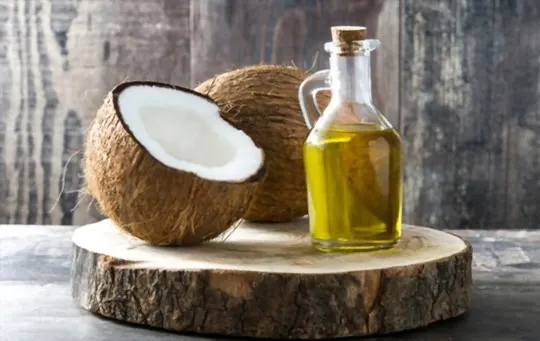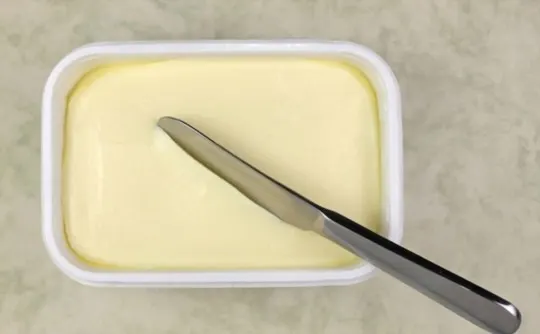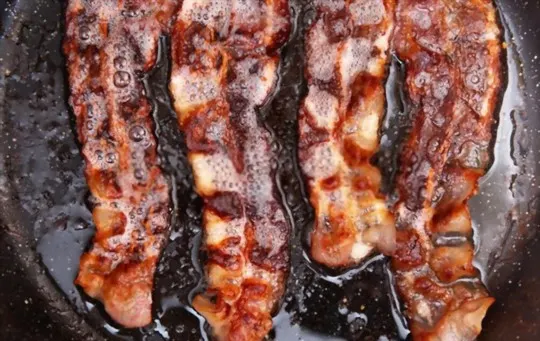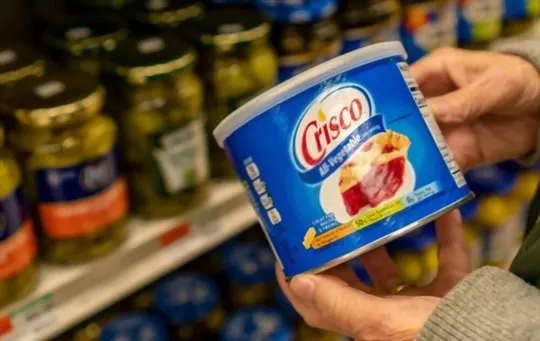Have you ever wondered what the fuss about vegetable shortening is all about?
Vegetable shortening has been an integral part of baking for many years, however if you have food allergies or don’t have it handy there are plenty of substitutes.
Fortunately, from coconut oil to butter and vegetable oils there are several alternatives that provide equivalent results.
Learning how to substitute vegetable shortening can help you prepare a tasty treat even when you don’t have any around.
What’s Vegetable Shortening?

When it comes to baking, vegetable shortening has been a preferred ingredient of many experienced bakers for decades.
It is an odorless, flavorless white solid derived from plant sources and is produced by the hydrogenation of plant oils.
Its unique properties make it a great way to add structure and texture to both pie crusts and cakes.
From muffins to cookies, you can use vegetable shortening in your favorite recipes instead of butter or oil to get flaky, crumbly results every time.
Not only does it make the results richer, but its neutral flavor won’t overpower the other ingredients like butter or margarine can.
You may need to adjust the amount of liquid in your recipe when substituting for oil; for every cup of oil replaced with vegetable shortening, add about 2-4 tablespoons of water.
Enjoying sweet and savory treats made with vegetable shortening will let you get delicious results without worrying about the complexities associated with some other shortenings.
The 5 Best Substitutes for Vegetable Shortening
If you have a recipe calling for vegetable shortening, but you don’t want to use it, there are some excellent substitutes that can fill in the gap.
Many people turn to vegetable shortening to provide a crispy texture when baking or to help in the production of foods like pie crusts.
It also imparts stability and texture when combined with other ingredients due to its stable nature at both high and low temperatures.
These five options are all excellent choices for replacing vegetable shortening without sacrificing flavour or texture:
1 – Lard

Lard is rendered pork fat and was often the go-to in baking before vegetable shortening was invented.
It has a much higher smoke point than butter, meaning it won’t burn as quickly in recipes that require high temperatures, such as pie crusts.
Lard is also similar in texture to vegetable shortening, making it an ideal substitute and great for producing flaky pastries.
If you’re vegan or vegetarian, however, lard is not an option.
When substituting lard for shortening in a recipe, use one part lard to three parts shortening called for and reduce the amount of liquid by 15%.
Also note that uncooked lard has a subtle pork flavor that can linger even after baking – if this is not desirable, try substituting with coconut oil instead.
2 – Butter

Butter is probably the most classic substitute for vegetable shortening, and it’s a great choice for baking.
It has a distinctive flavor that adds richness to baked goods.
It will add moisture, so if you are using a recipe that calls for vegetable oil it is advisable to use half butter and half oil.
Keep in mind that butter has more water than vegetable shortening and could melt too quickly if used as an all-over purpose substitute without making some adjustments such as adding flour or nuts.
Also, don’t forget that butter does burn easier, so keep an eye on whatever you are baking to avoid over-browning.
3 – Coconut Oil

Coconut oil has a higher smoke point than vegetable shortening but also not as neutral a flavor as hydrogenated oil.
However, it has many health benefits and it is a preferred cooking oil in many other parts of the world.
It is best used to replace vegetable shortening and other butter substitutes in baking recipes, although it can be used for cooking if you can accept the slightly sweet, somewhat coconut-y taste that it has when heated.
Coconut oil is liquid at room temperature, so be sure to take this into consideration when using it as a substitute for vegetable shortening; you may need to measure out a different amount than called for in the recipe to achieve your desired consistency.
4 – Margarine

Margarine is a popular substitute for vegetable shortening and has been used in baking and other cooking methods for many years.
It is a butter-like product that is made from regular or hydrogenated vegetable oil and emulsified with milk to give it a creamy, butter-like texture.
While margarine is not as stable as shortening when used in baking, it can be used to make pastries and other treats but may not have the same shelf life as those made with vegetable shortening.
Many bakers prefer the flavor of margarine over vegetable shortening so it can be a great substitute in recipes that call for butter.
To make sure you get the best results, you should use soft (or light) margarine since it usually has a lower fat content than regular or full-fat versions.
Be aware that some brands of margarine also contain trans fats so check the nutrition label before purchasing.
5 – Bacon Fat

Bacon fat is one of the oldest substitutes for vegetable shortening, and today it remains a popular flavor-enhancer in various dishes.
If you have bacon on hand, simply save the bacon fat in a container and store it in your refrigerator or freezer.
This way, you’ll always have it on hand when a recipe calls for shortening.
When using bacon fat as a substitute for vegetable shortening, keep in mind that it has an intense flavor that can overpower some recipes.
Additionally, because bacon fat is derived from pork products most people prefer not to serve recipes made with it to vegetarians or religious groups that forbid pork-based products.
To help retain its flavor and prevent it from becoming rancid, be sure to store the bacon fat covered in an airtight container before use.
Conclusion
When considering substitutions for vegetable shortening, it is important to keep in mind the desired outcome you are trying to achieve.
Depending on what you are making and what type of texture you would like your baked goods to have, some substitutes may work better than others.
When baking cakes, substituting butter may work best for a lighter and more moist outcome.
If frosting is the end goal, substituting margarine or vegan butter should be kept in mind.
Other potential healthy fat substitutes include applesauce and blended silken tofu as oil replacements.
Lastly, coconut oil can be an excellent trade-off for a variety of sweet treats as an alternative to shortening.
No matter which substitute you choose, be mindful that these alternatives will change the overall flavor of the recipe and may require different levels of baking time or temperatures.
The simple fact is that no one single substitute will work perfectly in every recipe — trial and error with each substitution is sometimes necessary until you find what works best.

The 5 BEST Substitutes for Vegetable Shortening
Ingredients
- 1 – Lard
- 2 – Butter
- 3 – Coconut Oil
- 4 – Margarine
- 5 – Bacon Fat
Instructions
- Choose your preferred substitute from the list of options.
- Organize all of your ingredients.
- Use the proper substitute to cook your recipes.
